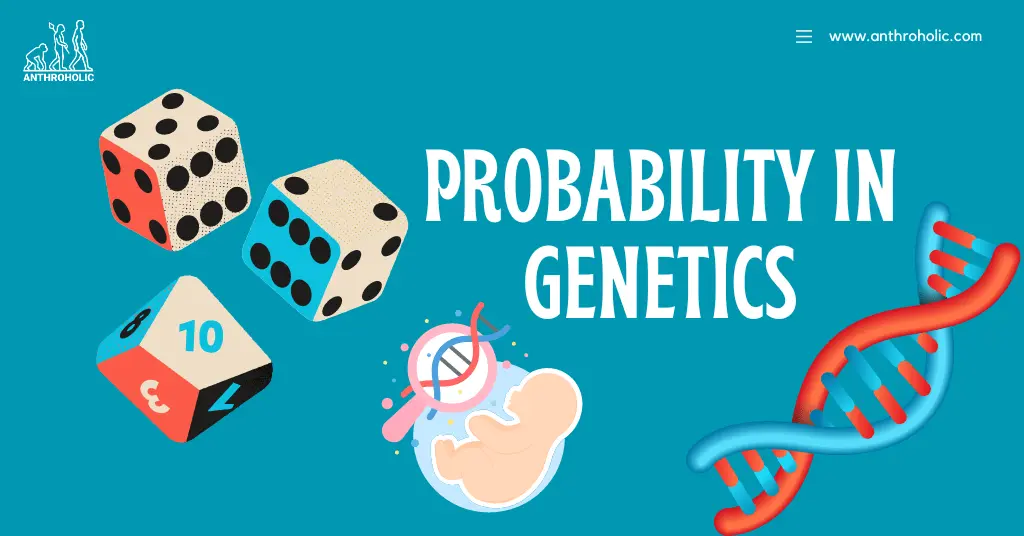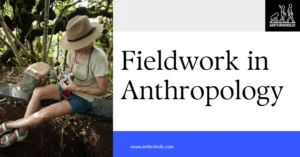AI Answer Evaluation Platform Live Now. Try Free Answer Evaluation Now
Probability in Genetics
The essence of genetics involves understanding how traits are inherited from one generation to the next. However, determining which traits will actually be passed on isn’t always straightforward, which is where probability in genetics comes in. Essentially, the science of genetics is fundamentally intertwined with the principles of probability.

Probability in Genetic is used to measure the likelihood that a certain event will occur, where an event is defined as the combination of one or more outcomes. For instance, an event may be the inheritance of a certain genetic trait like eye color or hair type. Because each individual receives one chromosome from each parent, there are different possible combinations, and hence different possible outcomes.
Probability in Mendelian Genetics
Gregor Mendel, the “Father of Genetics,” used probability principles in his pioneering work with pea plants in the mid-19th century. His laws of inheritance, namely the law of segregation and the law of independent assortment, are actually grounded in the rules of probability.
Law of Segregation
The law of segregation states that an organism’s traits are determined by pairs of “factors” (now known as alleles) which separate independently in the formation of gametes (sex cells). A gamete receives one allele or the other. Thus, when we are calculating the probability of an offspring inheriting a certain trait, it is essentially equivalent to predicting the outcome of a coin toss. The probability is 50% that it will receive one allele and 50% that it will receive the other [1].
Law of Independent Assortment
Mendel’s second law, the law of independent assortment, suggests that different traits are inherited independently of one another. However, this is only strictly true for genes located on different chromosomes or far apart on the same chromosome. When considering multiple traits, we calculate the probability of them inheriting together using the product rule of probability (i.e., the probability of two independent events both occurring is the product of their individual probabilities).
For instance, in a dihybrid cross involving two traits, the probability that an offspring inherits a certain combination of traits is the product of the probability of inheriting each trait separately. This underpins the classic Mendelian 9:3:3:1 ratio observed in dihybrid crosses [2].
Understanding Genetic Variation
Genetic variation refers to differences in the genetic makeup of individuals within a population. These variations arise from several sources, including mutations (random changes in DNA), recombination during sexual reproduction (the reshuffling and exchange of genes), and gene flow (the transfer of genes from one population to another) [3].
The fact that individuals in a species are not genetic clones of one another, but instead have variations in their DNA, is critical to the process of evolution. It provides the raw material upon which natural selection can act. Genetic variation is also crucial for a species’ long-term survival, as it allows populations to adapt to changing environments.
How Probability Explains Genetic Variation
Probability plays an essential role in explaining genetic variation. The outcomes of both mutation and recombination, two key generators of genetic variation, are inherently probabilistic.
- Mutation: Mutations occur randomly, and the likelihood of a specific mutation happening is typically quite low, making this a probabilistic event. Each gene in an organism has a certain probability of mutating, leading to genetic variation [4].
- Recombination: In sexual reproduction, recombination generates new combinations of genes as chromosomes from each parent align and sometimes swap segments during meiosis, the process that produces eggs and sperm. Which particular combinations end up in a given gamete is a matter of chance, again making this a probabilistic process. As such, the number of potential combinations of chromosomes that can result from meiosis is vast, especially when one considers that humans have 23 pairs of chromosomes [5].
The role of probability in genetic variation becomes more evident when we consider a large population over a span of several generations. The probable genetic makeup of future generations is determined not only by the genes present in the current generation but also by the laws of probability, which predict how these genes will be reshuffled and passed on.
Probability in Inheritance Patterns
Probability in Monohybrid Cross
A monohybrid cross is a breeding experiment that involves parents differing in one genetic characteristic. Gregor Mendel conducted such experiments by controlling the breeding of pea plants. He crossed plants with distinct attributes — for instance, plants that consistently produced yellow seeds with plants that produced green seeds. This characteristic (seed color) is determined by one gene that occurs in two variants (alleles): one for yellow (Y) and one for green (y).
The law of segregation and the concept of dominance come into play here. Each plant in Mendel’s experiment had two alleles for each trait. During reproduction, these alleles segregate so that each gamete carries only one allele for each trait. When the plants’ gametes combine randomly, the resulting offspring’s genetic makeup (genotype) and physical appearance (phenotype) are determined by which alleles they received.
If we represent the dominant allele (yellow) as Y and the recessive (green) as y, the parental (P) generation in Mendel’s experiment could be represented as YY (homozygous for yellow) and yy (homozygous for green). Each plant contributes one allele, so the first generation (F1) offspring are all Yy, demonstrating the dominant trait, yellow.
If these heterozygous plants (Yy) are crossed, we get the second generation (F2) with three yellow-seeded plants for every one green-seeded plant. In terms of probability, there is a 75% (or 3 out of 4) chance that an offspring will have yellow seeds and a 25% (or 1 out of 4) chance that it will have green seeds.
| Y | y | |
| Y | YY | Yy |
| y | Yy | yy |
Probability in Dihybrid Cross
- A dihybrid cross involves parents differing in two genetic characteristics.
- For instance, Mendel crossed pea plants differing in seed color (yellow or green) and seed texture (smooth or wrinkled).
- Here, Mendel’s law of independent assortment comes into play, stating that alleles for different traits are passed to offspring independently of one another.
- Thus, the allele a plant inherits for seed color does not influence the allele it inherits for seed texture.
- If we cross two plants that are heterozygous for both traits (YyRr), the resulting probability ratio for the phenotypes in the F2 generation will be a 9:3:3:1 ratio.
- This means, for example, that there is a 9 out of 16 chance that a pea plant will have yellow and smooth seeds, a 3 out of 16 chance that it will have yellow and wrinkled seeds, and so on.
| YR | Yr | yR | yr | |
| YR | YYRR | YYRr | YyRR | YyRr |
| Yr | YYRr | YYrr | YyRr | Yyrr |
| yR | YyRR | YyRr | yyRR | yyRr |
| yr | YyRr | Yyrr | yyRr | yyrr |
Probability in Polygenic Inheritance
- Polygenic inheritance refers to the inheritance of traits that are controlled by more than one gene.
- These genes, often located at different loci, can have two or more alleles that interact to produce a trait.
- A common example of a polygenic trait is human skin color, which is influenced by multiple genes.
- The probability in polygenic inheritance is more complex than in monohybrid or dihybrid crosses due to the interaction of multiple genes.
- Each gene has an additive effect on the phenotype, making it possible to have a wide range of phenotypes.
- The inheritance of these traits often appears to follow a bell-shaped curve, with most individuals inheriting a combination of dominant and recessive alleles and, therefore, expressing an intermediate phenotype.
- A fewer number of individuals will inherit mostly dominant or mostly recessive alleles, leading to extreme phenotypes.
- The probability of a specific phenotype in polygenic inheritance can be determined using statistical methods, but it requires knowledge of the frequency of the contributing alleles in the population.
Probability in Sex-Linked Inheritance
- Sex-linked inheritance refers to the inheritance of genes that are located on the sex chromosomes. In humans and many other species, these are the X and Y chromosomes.
- One of the most common examples of sex-linked inheritance is color blindness.
- This trait is determined by a gene located on the X chromosome. Females (XX) who have one copy of the color blindness allele are typically carriers, while males (XY) who have the color blindness allele are usually color blind.
- This is because males only have one X chromosome and, therefore, only one copy of the gene.
- The probability that a son inherits color blindness from his carrier mother is 50%, as the son has an equal chance of receiving either the X chromosome carrying the color blindness allele or the X chromosome without the color blindness allele.
- The probability that a daughter becomes a carrier is also 50% for the same reason. Daughters can only be color blind if their father is color blind and their mother is either color blind or a carrier.
Understanding Genetic Disorders
Genetic disorders are diseases that are caused by abnormalities in an individual’s genome. These abnormalities can range from a small mutation in a single gene to the addition or subtraction of an entire chromosome or set of chromosomes.
Genetic disorders can be classified into three main types based on how they are inherited: single-gene disorders, chromosomal disorders, and complex disorders. Single-gene disorders, also known as Mendelian or monogenic disorders, are caused by mutations in the DNA sequence of one gene. Chromosomal disorders are caused by changes in the number or structure of chromosomes. Complex disorders, also known as multifactorial disorders, are caused by a combination of genetic and environmental factors.
Probability in Autosomal Recessive Disorders
- Autosomal recessive disorders are a type of single-gene disorder.
- They occur when an individual inherits two copies of a mutated gene, one from each parent.
- An individual who has only one copy of the mutation is a carrier and does not usually show symptoms of the disorder.
- The probability of a couple, where both individuals are carriers of an autosomal recessive disorder, having a child with the disorder is 25% (or 1 in 4) for each pregnancy.
- This can be visualized with a Punnett square, where “A” is the normal allele and “a” is the allele for the disorder:
| A | a | |
| A | AA | Aa |
| a | Aa | aa |
- The child has a 25% chance of being homozygous “AA” (not a carrier and not affected), a 50% chance of being heterozygous “Aa” (a carrier but not affected), and a 25% chance of being homozygous “aa” (affected by the disorder).
Probability in Autosomal Dominant Disorders
- Autosomal dominant disorders are also single-gene disorders. They occur when an individual inherits only one copy of a mutated gene from either parent.
- The probability that a child will inherit the disorder from a parent who has the disorder is 50% for each pregnancy.
- This is because the affected parent can pass on either the normal allele or the mutated allele.
- This can be shown with a Punnett square, where “A” is the allele for the disorder and “a” is the normal allele:
| A | a | |
| A | AA | Aa |
| a | Aa | aa |
- Here, the child has a 50% chance of being heterozygous “Aa” (affected by the disorder) and a 50% chance of being homozygous “aa” (not affected).
Probability in X-Linked Disorders
- X-linked disorders are caused by mutations in genes on the X chromosome. Females have two X chromosomes, while males have one X and one Y chromosome.
- Therefore, males are more often affected by X-linked disorders than females.
- If the mother is a carrier of an X-linked recessive disorder and the father is not affected, their daughters have a 50% chance of being carriers (like their mother) and their sons have a 50% chance of being affected by the disorder.
- This is because the mother can pass on either the X chromosome with the normal allele or the X chromosome with the mutated allele.
- If the father is affected by an X-linked recessive disorder and the mother is not a carrier, none of their sons will have the disorder (since they receive their X chromosome from their mother), and all of their daughters will be carriers (since they receive their X chromosome with the mutated allele from their father).
- For X-linked dominant disorders, a father who is affected will pass the disorder to all his daughters but none of his sons. An affected mother has a 50% chance of passing the disorder to each of her children, regardless of sex.
Understanding the Role of Genetic Counseling
Genetic counseling is a process to evaluate and understand a family’s risk of an inherited medical condition. A genetic counselor, a healthcare professional with specialized training in genetics and counseling, provides this service.
The main goals of genetic counseling include:
- Educating the patient about the basic concepts of genetics pertinent to their personal or familial situation.
- Interpreting family and medical histories to assess the risk of disease occurrence or recurrence.
- Providing guidance and support to help the patient understand and adapt to the medical, psychological, familial implications of genetic contributions to disease.
Use of Probability in Predicting Genetic Risks
- Probability is a fundamental aspect of genetic counseling.
- Based on the principles of genetics and the family history, a genetic counselor can estimate the likelihood of an individual or their offspring inheriting or passing on a genetic disorder.
- For example, in the case of autosomal recessive disorders, if both parents are carriers, there is a 25% chance that any given child will be affected by the disorder. Similarly, for autosomal dominant disorders, an affected parent has a 50% chance of passing the disorder to each of their children.
- Genetic counselors also use probability when discussing results of genetic testing.
- For instance, a genetic test may not always provide a definitive result – a test may indicate an increased risk of developing a disorder, but it doesn’t guarantee that the individual will develop the disorder.
- The counselor will explain this probability to the individual, helping them understand their risk and make informed decisions about their health.
- Probability can also be used in prenatal diagnosis to predict the likelihood of a fetus inheriting a genetic disorder, such as Down syndrome or cystic fibrosis.
- Depending on the results, parents can be informed of the probability of their child having the disorder, which can aid in making decisions about the pregnancy or preparing for the care of the child.
References
[1] Griffiths, A.J., Wessler, S.R., Carroll, S.B., & Doebley, J. (2015). Introduction to Genetic Analysis. 11th Edition. Freeman and Company. https://www.scribd.com/document/397858427/An-Introduction-to-Genetic-Analysis-11th-Edition-pdf
[2] Hartl, D. L., & Jones, E. W. (2009). Genetics: Analysis of Genes and Genomes. Jones & Bartlett Learning.
[3] Freeman, S., & Herron, J. C. (2014). Evolutionary Analysis. 5th Edition. Pearson.
[4] Drake, J. W., Charlesworth, B., Charlesworth, D., & Crow, J. F. (1998). Rates of spontaneous mutation. Genetics, 148(4), 1667-1686.
[5] Barton, N. H., Etheridge, A. M., & Véber, A. (2016). The infinitesimal model: definition, derivation, and implications. Theoretical population biology, 118, 50-73. https://doi.org/10.1016/j.tpb.2017.06.001




